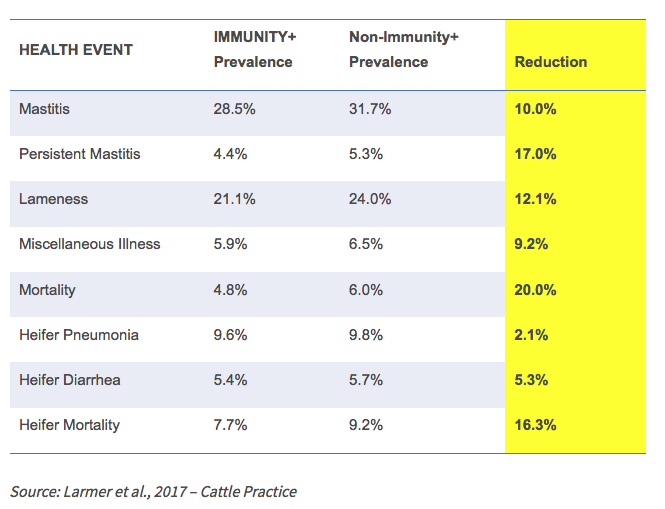Selection for Immunity Could Save $72,330 per Year for 1,000 Cow Dairy
BY: WYATT BECHTEL
www.milkbusiness.com
Despite all of the improvements made with dairy animal husbandry there continues to be worse health performance, says Steven Larmer, geneticist and business analyst for Semex.
:Unfortunately, we do have a significant genetic and phenotypic negative correlation between milk production and health of animals. The more stress we continue to put on animals to produce more milk, the more disease we see," Larmer adds. Larmer discussed a genetic solution that Semex has been working on with Immunity+ during the MILK Business Conference in Las Vegas.
Semex made Immunity+ available to producers in 2012 after Bonnie Mallard from the University of Guelph in Canada researched and developed the technology.
Larmer says Mallard and other researchers at Guelph published more than 100 peer-reviewed research papers during that time, and research on the link between genetics and immunity is ongoing.
"When all else is equal, the thing that's going to differ between two cows on your dairy is, how strong is their immune system? How able are they going to be to respond to that challenge? Because no matter how well managed a dairy is, every cow is going to encounter both bacterial and viral pathogens almost every day on a dairy farm," Larmer says.
Having cows with naturally strong immune systems should increase longevity and reduce time that cows are out of the milking herd because of withdrawal times.
Genetics have helped push a large portion of milk production increases in the past few decades because it is 30% heritable. Immune response is similarly heritable at 30%, creating a massive potential to positively impact disease incidences simply through genetic selection.
High immune response cows account for the top 20% of cows with strong immunity through various research. Those cows have been shown to have more antibodies in their colostrum, respond better to vaccinations and have half as much disease occurrences as low immune response cows.
Immunity+ cattle are identified through a test that replicates a disease pathogen within an animal, but it doesn't actually infect them.
"So that patented substance basically tricks the immune system into responding as if there were a virus," Larmer says.
Stronger immune systems will send more cells, and there will be more swelling. A similar bacterial infection will be replicated the next day, and cattle are retested 14 days later to see the amount of antibodies.
Sires are only designated as Immunity+ if they pass both test with high immune responses.
"We want to make sure that we are breeding animals that are as resistant to those diseases as possible," Larmer says.
A study of Semex sired animals from 35 commercial dairies in 2017 showed improvements in a number of areas on about 30,000 cows and 75,000 heifers tested. The reductions in disease incidence are in the table.
The improvements in immune response would have resulted in $72,330 savings for herds milking 1,000 cows during one lactation period.
Other research done with Immunity+ genetics have showed promising results through genomic testing and looking at colostrum of animals from high immune response sires.
























